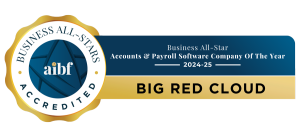Reviewing the year
In a recent blog post we looked at how to construct a financial report. Now we outline what is required to produce an engaging and comprehensive annual report and how accounting software can be used to find the necessary financial data.
There are many reasons why annual reports are so lengthy, one of which is that they don’t just cover the financial performance of the organisation over the previous 12 months – they are also an opportunity to review significant developments and explain why certain decisions were taken as well as to look ahead.
Listed companies are obliged to produce these documents, but small businesses may also choose to publish an annual report as part of their interaction with customers.
Setting the scene
Start by deciding the message you want to get across. The figures may tell their own story, but this doesn’t stop you from making sure the points you want to make come across clearly.
A typical annual report will include the following sections:
- Statement from the head of the business
- Executive summary (no more than two pages highlighting the key messages you want the reader to take from the report)
- Summary of the company’s achievements over the last 12 months
- Financial information including assets and liabilities, and income and expenditure
Think about what your audience would want to know. If this is being done for the benefit of customers you need to focus on different considerations than if it is targeted at potential investors, for example.
The ‘write’ approach
Financial reports are usually produced for specific purposes – such as an application for funding – so are not necessarily a regular publication. An annual report (as the name suggests) has to be published every year so it is worth settling on a consistent structure.
There are plenty of templates available online. A quick search online will also throw up examples of style guides that can be used to ensure consistency across each report and indeed all your business communication.
Spelling or grammatical errors will make a bad impression and suggest a slapdash approach. Because annual reports are usually produced by more than one person, a style guide will also help everyone use the same format for dates, titles, etc.
Getting the facts
As with an income statement, cash flow or balance sheet report, using a cloud based accounting package such as Big Red Cloud will make it easier to find the necessary financial data. However, you may also have to gather information from senior management so allow times for interviews and reviews.
The report can point the reader towards a certain conclusion but must be written objectively and accurately. Any attempt to ‘bury bad news’ will be poorly received.
Finally, don’t expect to get it right first time – in fact, you should plan for two or even three versions so you can work out what to include, reflect on the overall impression the report will make, and leave enough time for someone else to read over the document to ensure it is clear and coherent.




